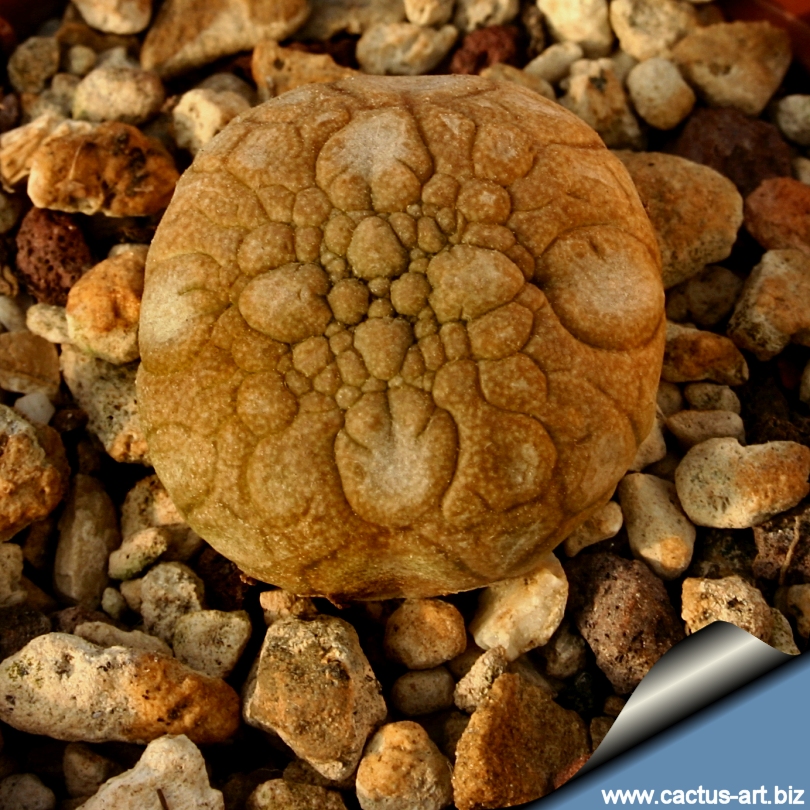|
|
|

Pseudolithos eylensis
In full sun plants take a
mimetic reddish-brown
pigmentation
|
Note: eylensis is different and recognizable
from
migiurtinus or cubiformis for its
monstrous and irregular squat form. It blooms abundantly, but pollination
is only carried out by flies that are their natural pollinator.
Manually it is extremely hard to
obtain the fecundation of these flowers. Many
consider this to be no more than a local form or variety of
Pseudolithos migiurtinus.
|
|


Advertising
|
|
|
|
|
Family:
Asclepiadaceae (Apocynaceae)
(Milkweeds family)
Scientific Name:
Pseudolithos eylensis nom. prov
Habitat: Grows in grit with little water and some sun.
Etymology: The
genus name "Pseudolithos"
derives from the Greek words “pseudo” meaning “false”
and “lithos” meaning “stone, pebble”
referring to the appearance of the stems.
(The genus name implies: “false stone”).
The
species name "eylensis"
derives from the town of
"eyl (or Eil)" in the
North East of Somalia. (The specific name implies
“from the surrounding of Ely”)
|
|
Morphology (Identifying
Characteristics):
Habit: Squat domed body. Usually
single stemmed.
Stem: It can grow to 12 cm in diameter and reach a height of
15 cm. The colour may vary from light green (in full
shaded environments) to reddish-brown (in full sun).
Flowers: Dark red to brown, with hairy petals with a lighter
centre. Like the other
pseudolithos, it smells
like rotting meat, and thereby attracts flies.
|
|
|
|
Cultivation: Relatively easy to grow,
but mistakes are costly. If rot sets in, there is practically no time,
nor warning, before the plant turns to expensive mush.
It needs regular watering, especially during the hottest
summer days.
Provide also some light watering if the green house
temperatures in
winter are elevated.
Either excessive
or very scarce watering can
induce
rot.
Frost Tolerance: Winter temperatures must be kept over 10°
C. ( But
it can withstand to winter night temperature
down to about 5° )
Sun Exposure: It takes a great advantage if grown in very strong
light but sheltered from full sun.
Cultural Practices:
Provide very good
ventilation. It grow quite easily and fast on its own roots.
It is
not difficult as commonly supposed, but inaccuracies are fatal. If
rot starts the plant will almost inevitably
die. This plant is a candidate for
under-potting, as long as you keep it watered.
Propagation: Seeds are the only way of
reproducing
|
|
Photos of conspecific taxa, varieties, forms and
cultivars of Pseudolithos migiurtinus.
(This
Taxon
is quite variable variable in shape, colour and size
and comprises several different forms, but each form
is linked to others by populations of plants with intermediate
characteristics).
See:
|
|